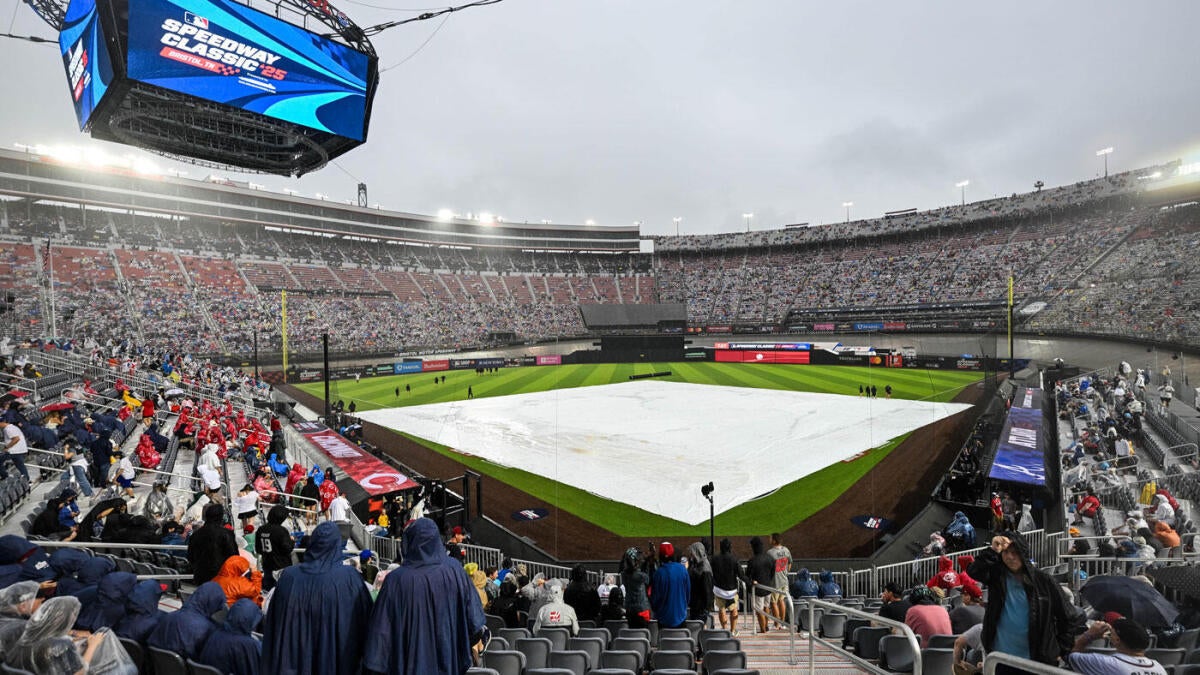The MLB Speedway Classic: A Rain-Soaked Lesson in Event Planning
The Unprecedented Experiment
The idea of hosting a Major League Baseball game at Bristol Motor Speedway was a bold one. Combining the excitement of NASCAR with the tradition of baseball, the MLB Speedway Classic promised a unique spectacle. The transformation of the speedway’s infield into a baseball diamond was a monumental task, requiring extensive preparation and innovation. The event was billed as a historic moment, a celebration of sports and entertainment that would draw fans from across the country. However, the grand vision was ultimately overshadowed by an unforgiving force: the weather.
The Weather’s Unforgiving Hand
From the outset, the event faced an uphill battle against the elements. The date chosen for the game carried inherent risks, as the region’s weather patterns are notoriously unpredictable. Initial forecasts hinted at the possibility of rain, but organizers pressed ahead, hoping for the best. The pre-game festivities, including musical performances and fan events, were carried out under overcast skies, with a palpable sense of anticipation mixed with anxiety.
The scheduled start time of 7:25 p.m. ET came and went as the rain intensified, leading to an initial delay of two hours and 17 minutes. Despite the setback, the atmosphere remained optimistic. Fans, many of whom had traveled long distances to attend, were determined to make the most of the experience. However, the reprieve was short-lived. After a mere one out in the bottom of the first inning, with the bases loaded and Cincinnati threatening to score, the rain returned with renewed vigor. Umpires were left with no choice but to suspend play once again.
The Decision to Suspend
The decision to suspend the game was not made lightly. Several factors played a crucial role in the decision-making process. Field conditions were a major concern. The transformation of a racetrack infield into a playable baseball field presented unique challenges, particularly in terms of drainage. The persistent rain quickly turned the outfield into a soggy mess, making it nearly impossible to continue play safely.
Player safety was another critical factor. MLB prioritizes the safety of its players above all else. Playing on a wet and slippery field increases the likelihood of slips, falls, and other injuries. The risk was deemed too high to continue the game under those circumstances. Visibility was also a significant issue. Heavy rain can significantly reduce visibility, making it difficult for players to see the ball and react accordingly. This is especially problematic for outfielders, who need to track fly balls in the air.
The fan experience was also taken into consideration. While many fans were willing to brave the elements, the prolonged delays and the increasingly uncomfortable conditions detracted from the overall experience. MLB officials recognized that it was not fair to subject fans to such conditions for an extended period.
The Aftermath and Lessons Learned
The suspension of the MLB Speedway Classic was a major disappointment for everyone involved. While the rain was an unavoidable factor, the incident raises important questions about risk assessment and contingency planning for future outdoor events. Advanced weather monitoring and forecasting can provide valuable insights into potential risks. Organizers should closely monitor weather patterns in the days and weeks leading up to the event and be prepared to adjust their plans accordingly.
Having well-defined contingency plans in place is crucial for mitigating the impact of inclement weather. This may include having an alternative date or location available, or implementing measures to improve field drainage. Clear and timely communication with fans is essential during weather delays. Providing regular updates on the status of the game and offering alternative entertainment options can help to keep fans engaged and informed.
The Future of Innovative Events
Despite the unfortunate circumstances, the MLB Speedway Classic was not a complete failure. The event generated significant buzz and demonstrated the potential for innovative collaborations between different sports. The record-breaking crowd that turned out for the game, even in the face of inclement weather, is a testament to the strong interest in such events.
With careful planning, improved risk management, and a bit of luck from Mother Nature, future editions of the MLB Speedway Classic could be a resounding success. The key is to learn from the mistakes of the past and adapt to the unpredictable nature of outdoor events. The enduring appeal of baseball, combined with the excitement of NASCAR, offers a unique opportunity to create unforgettable experiences for fans. By embracing innovation and resilience, the MLB Speedway Classic can become a staple of the sports calendar, weather or not.











